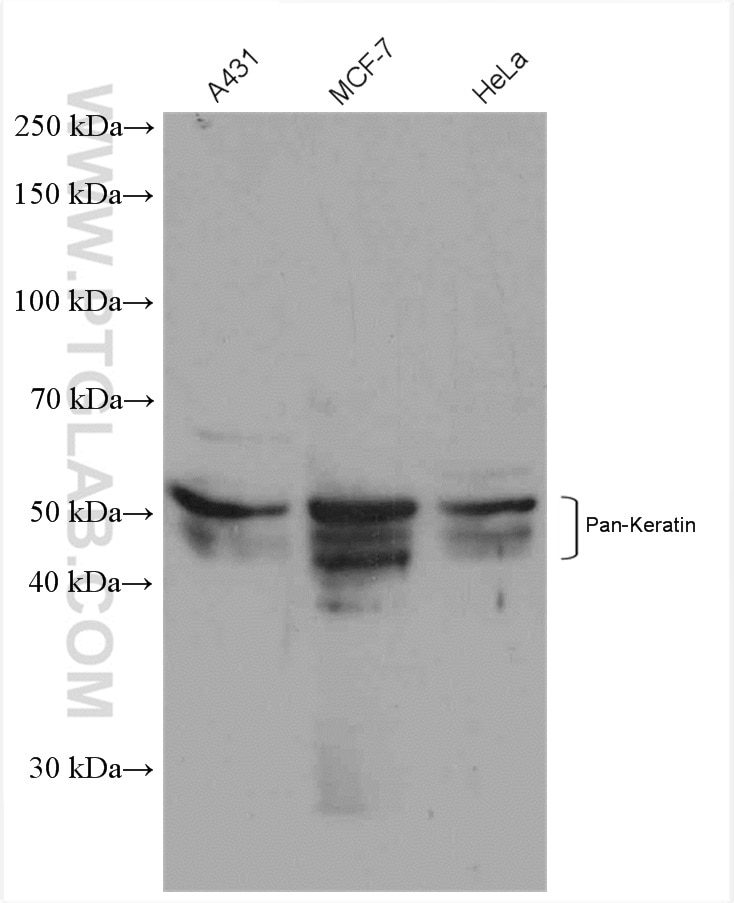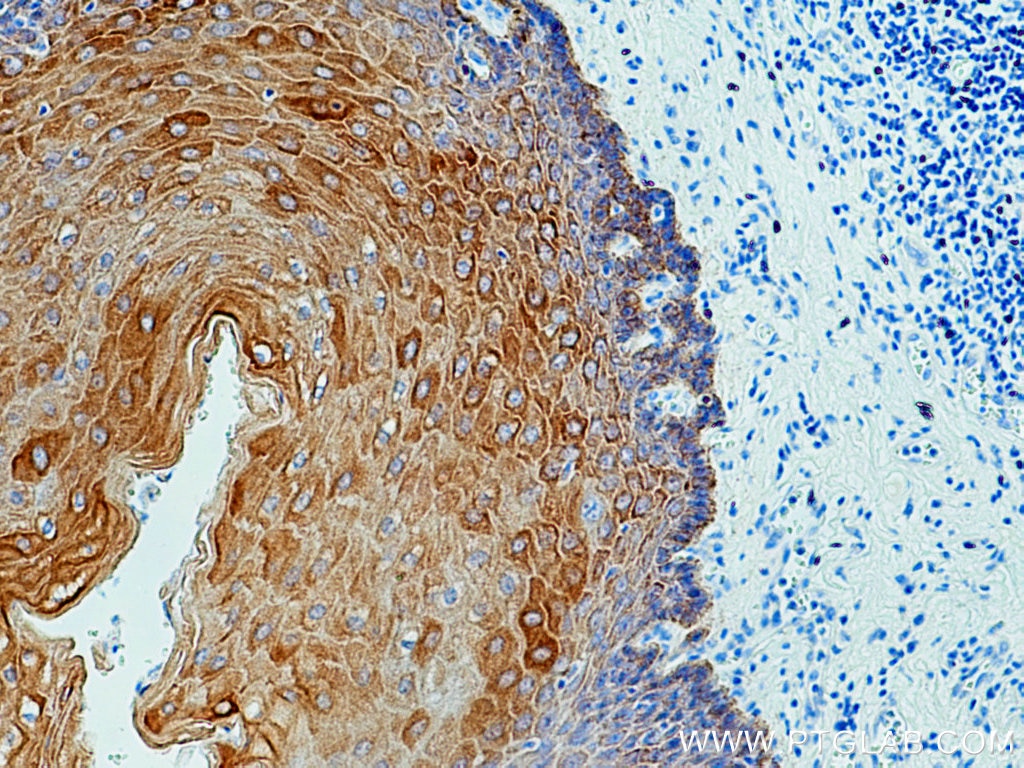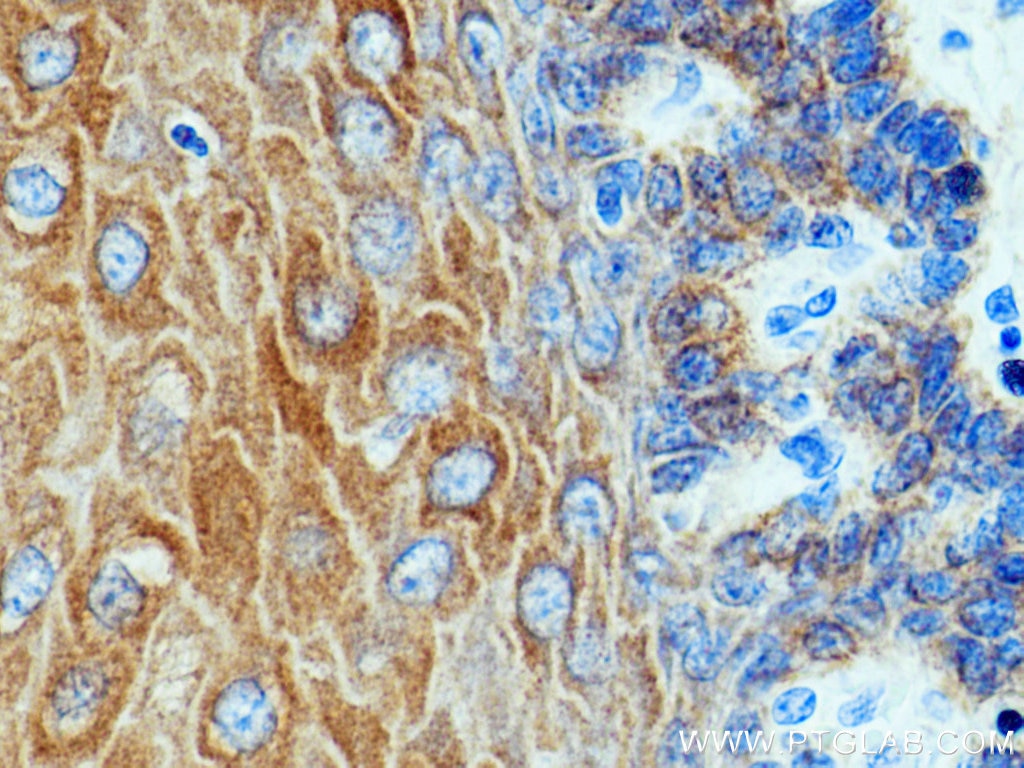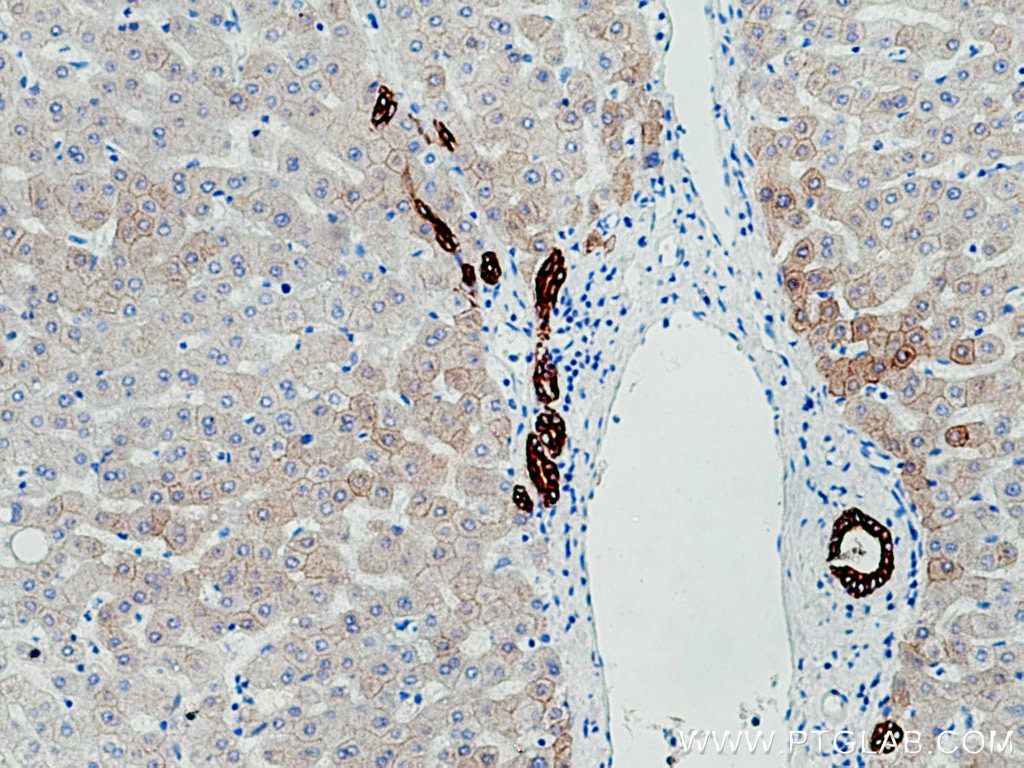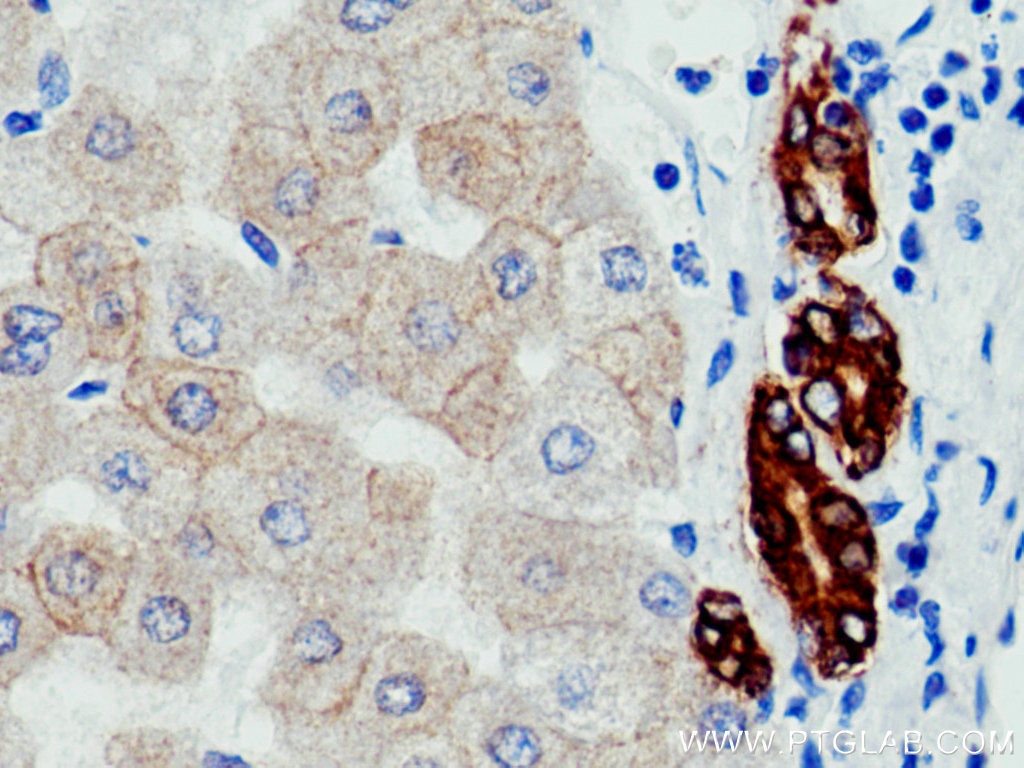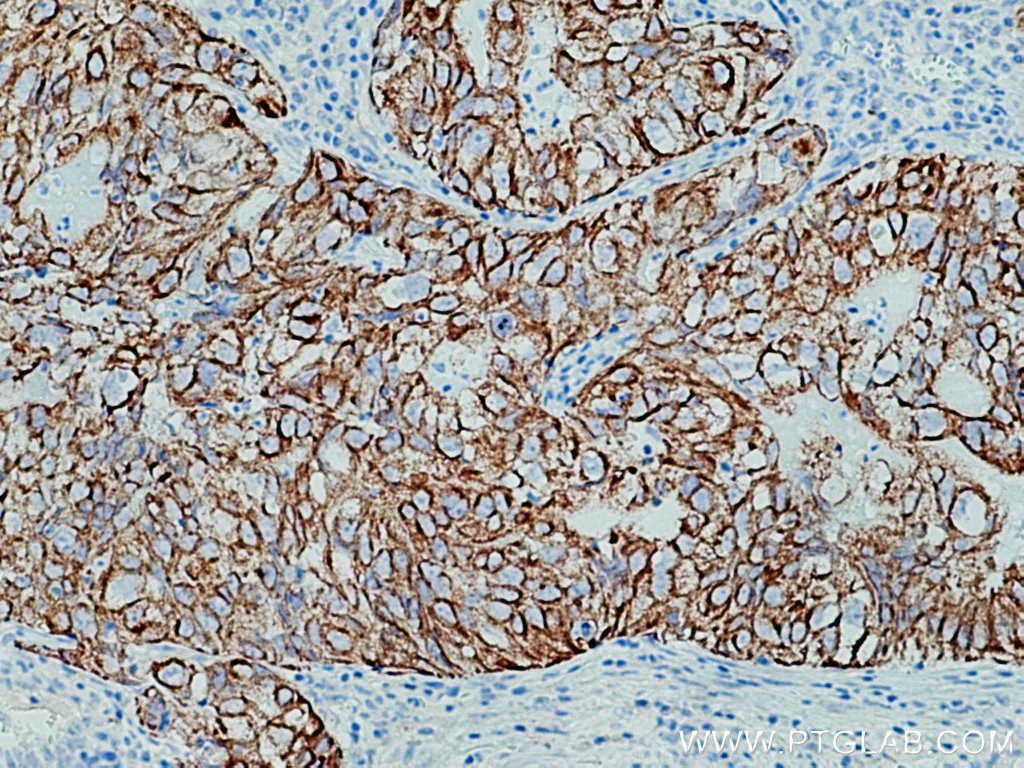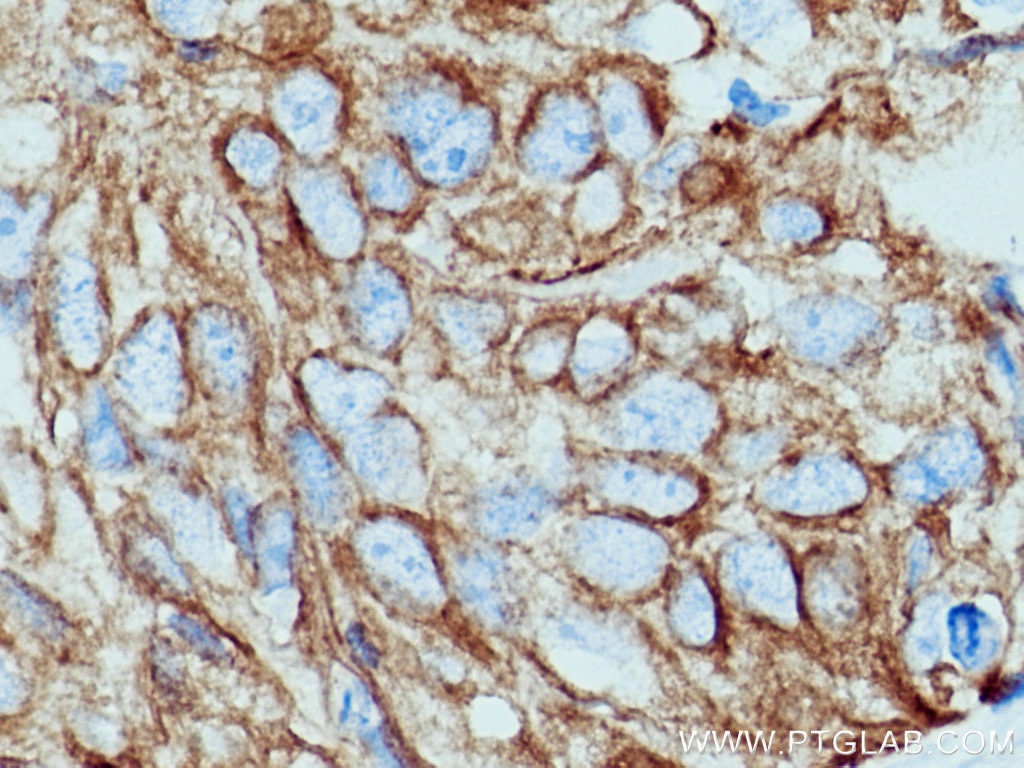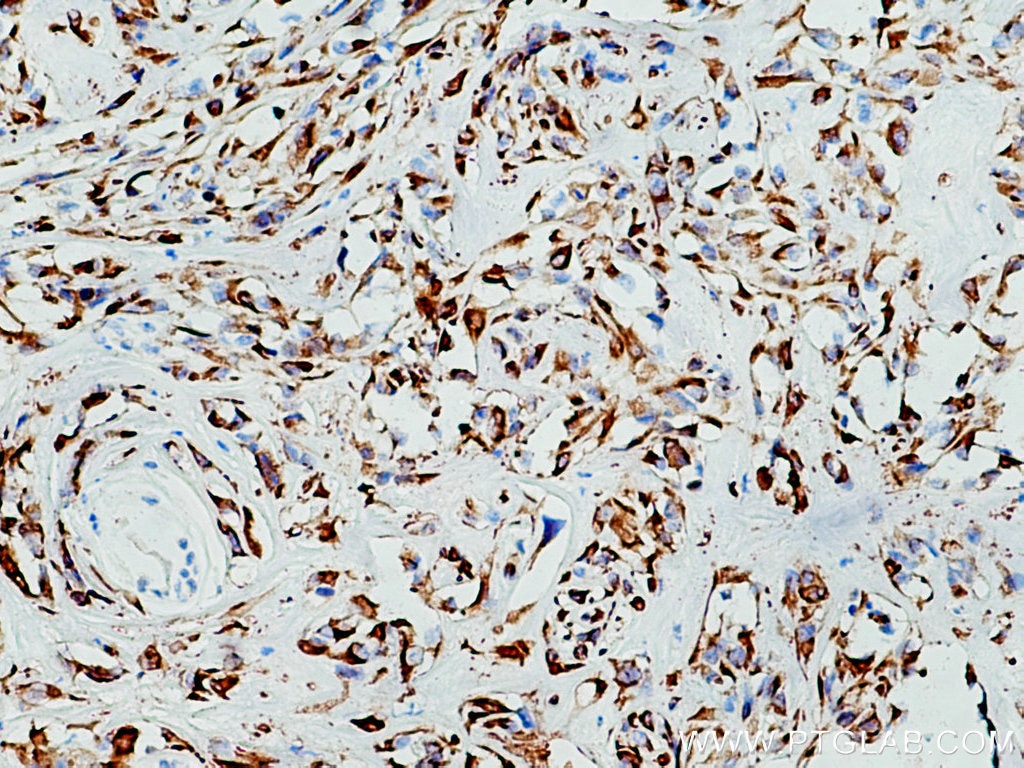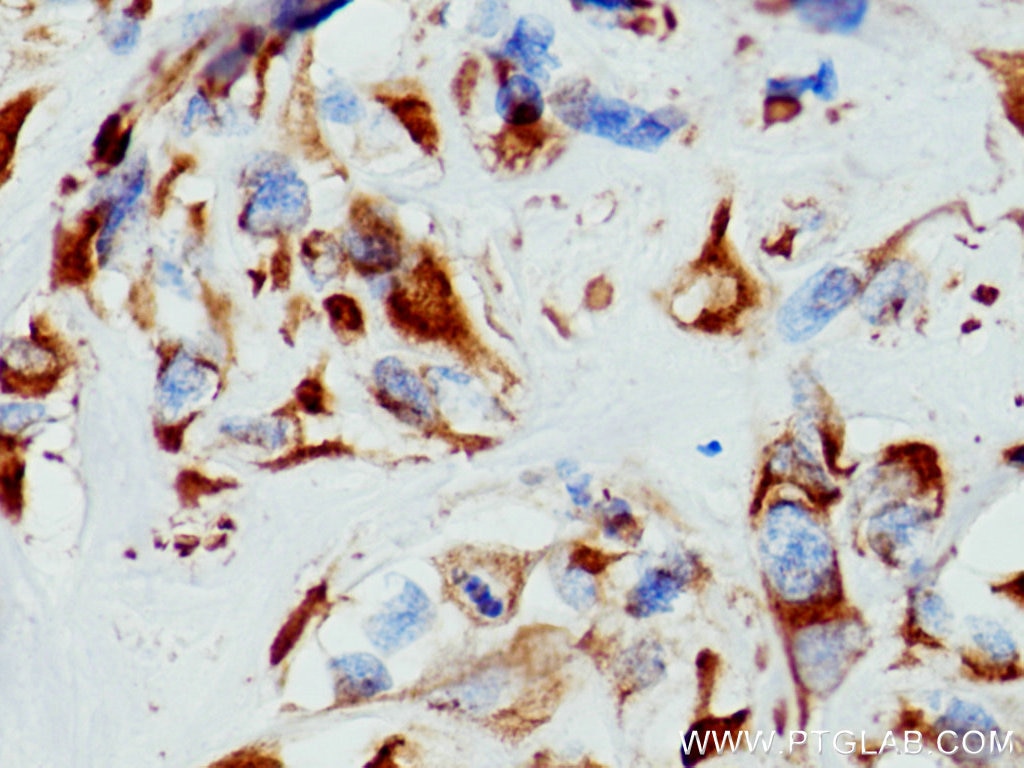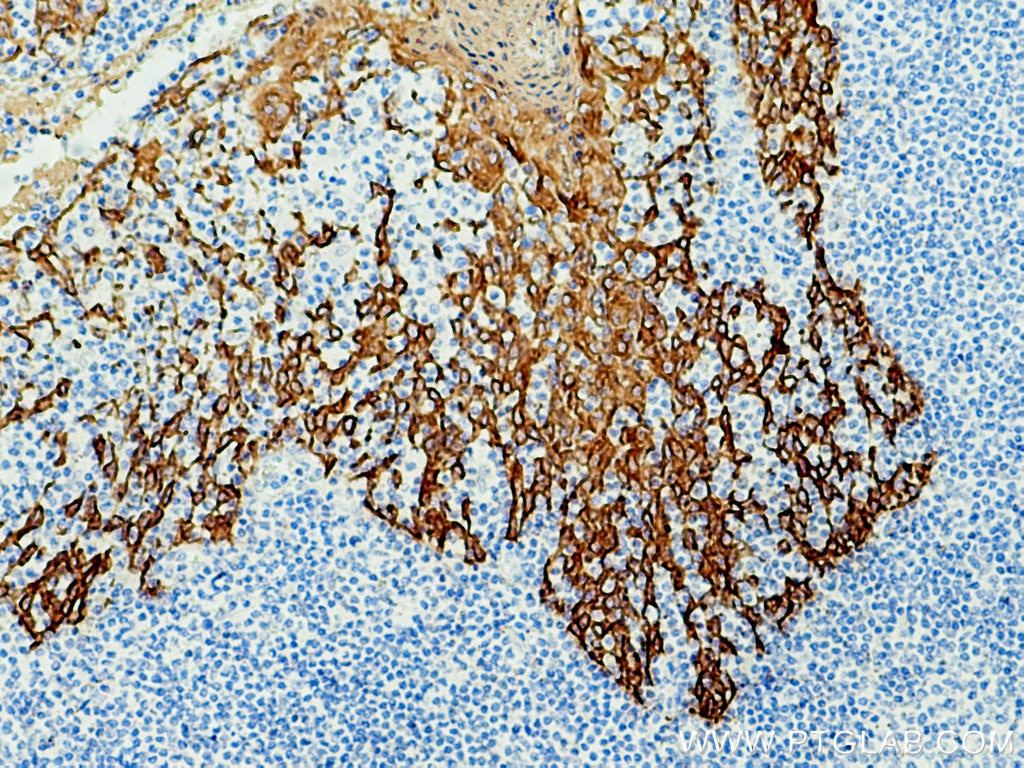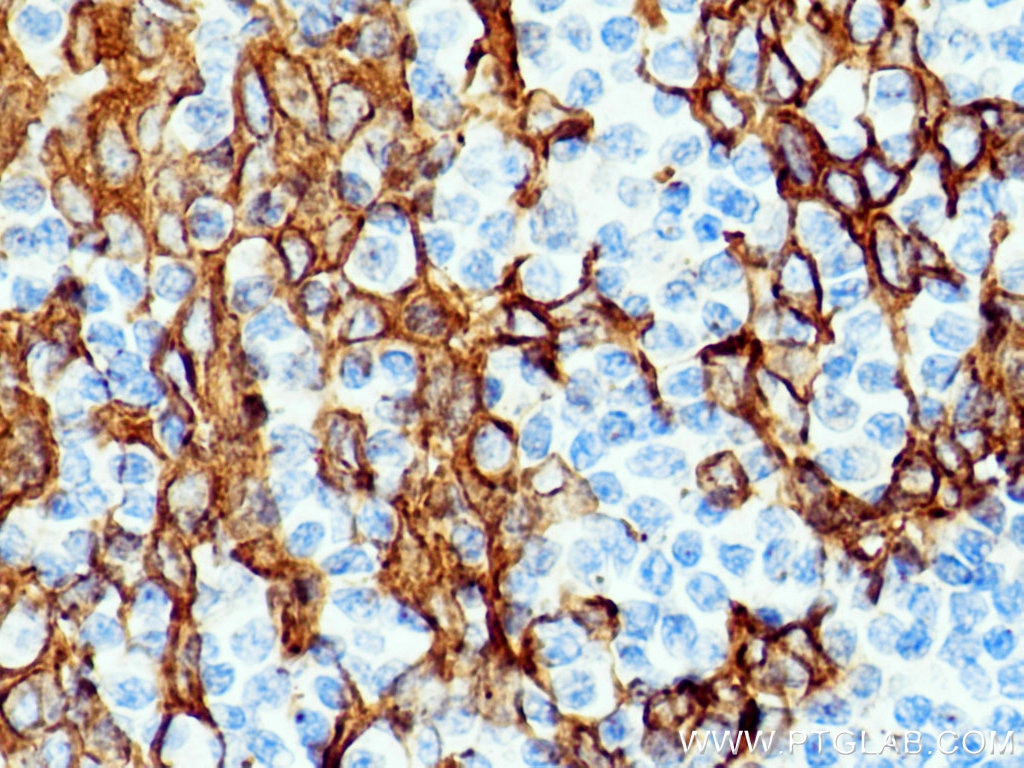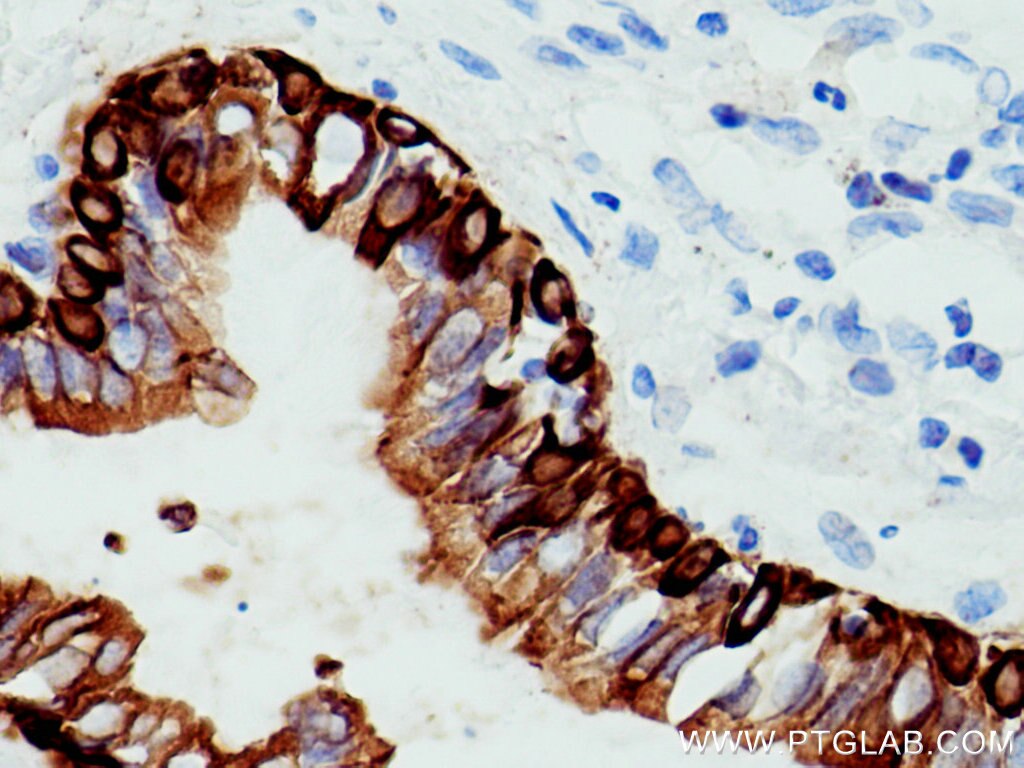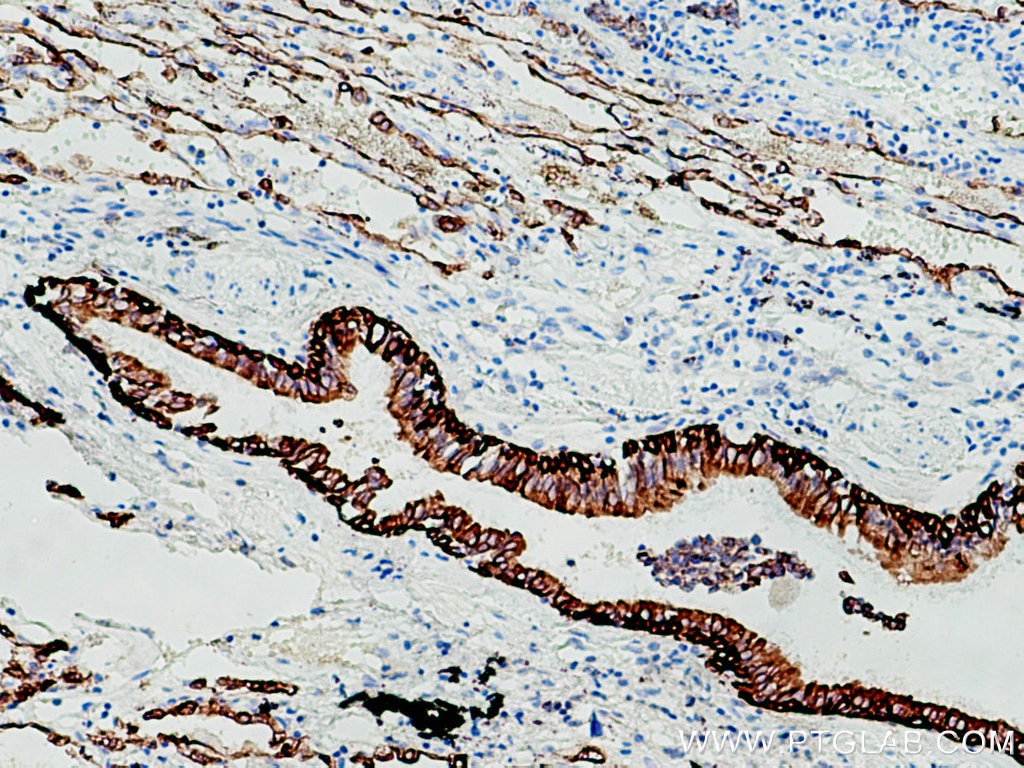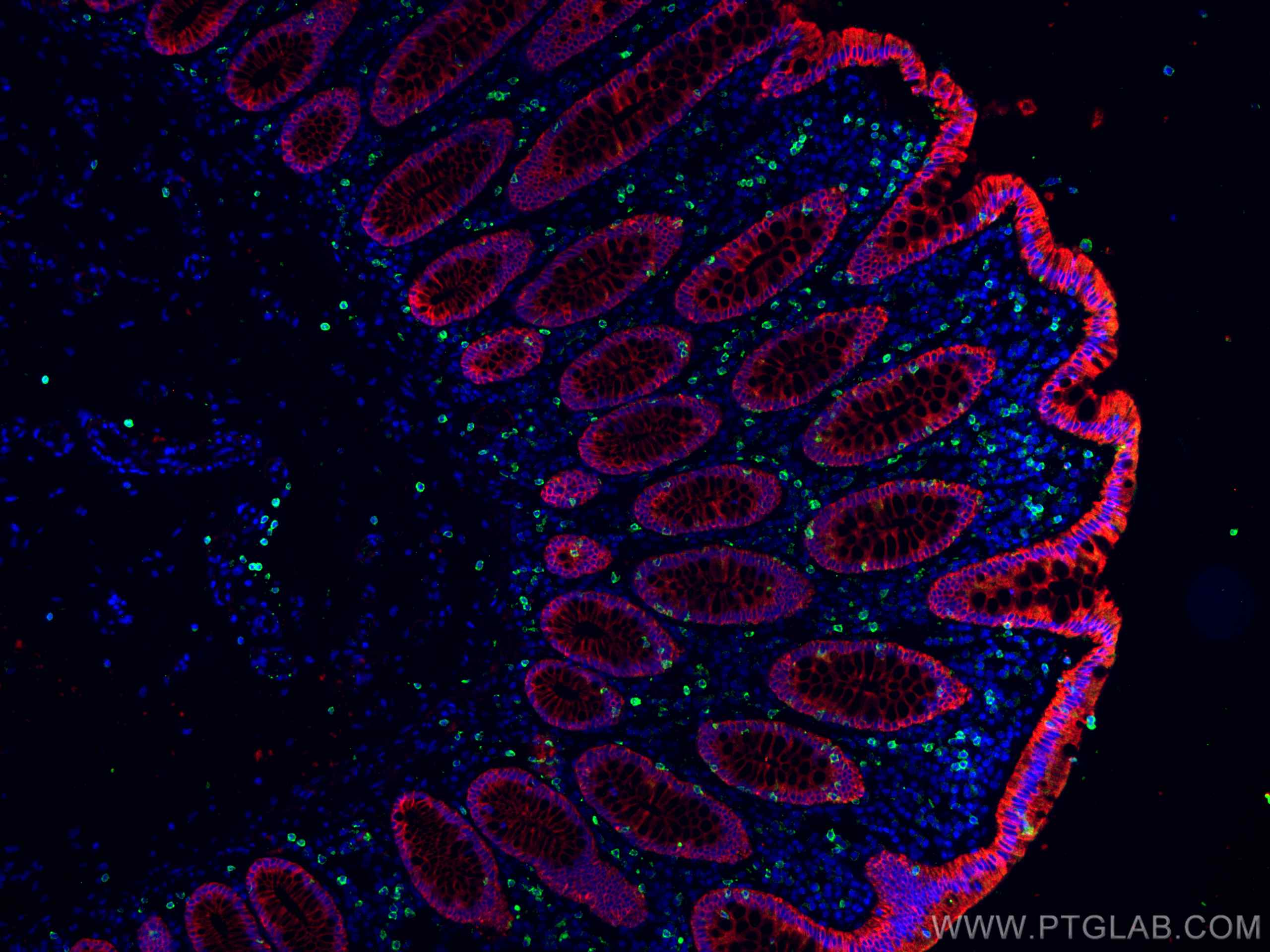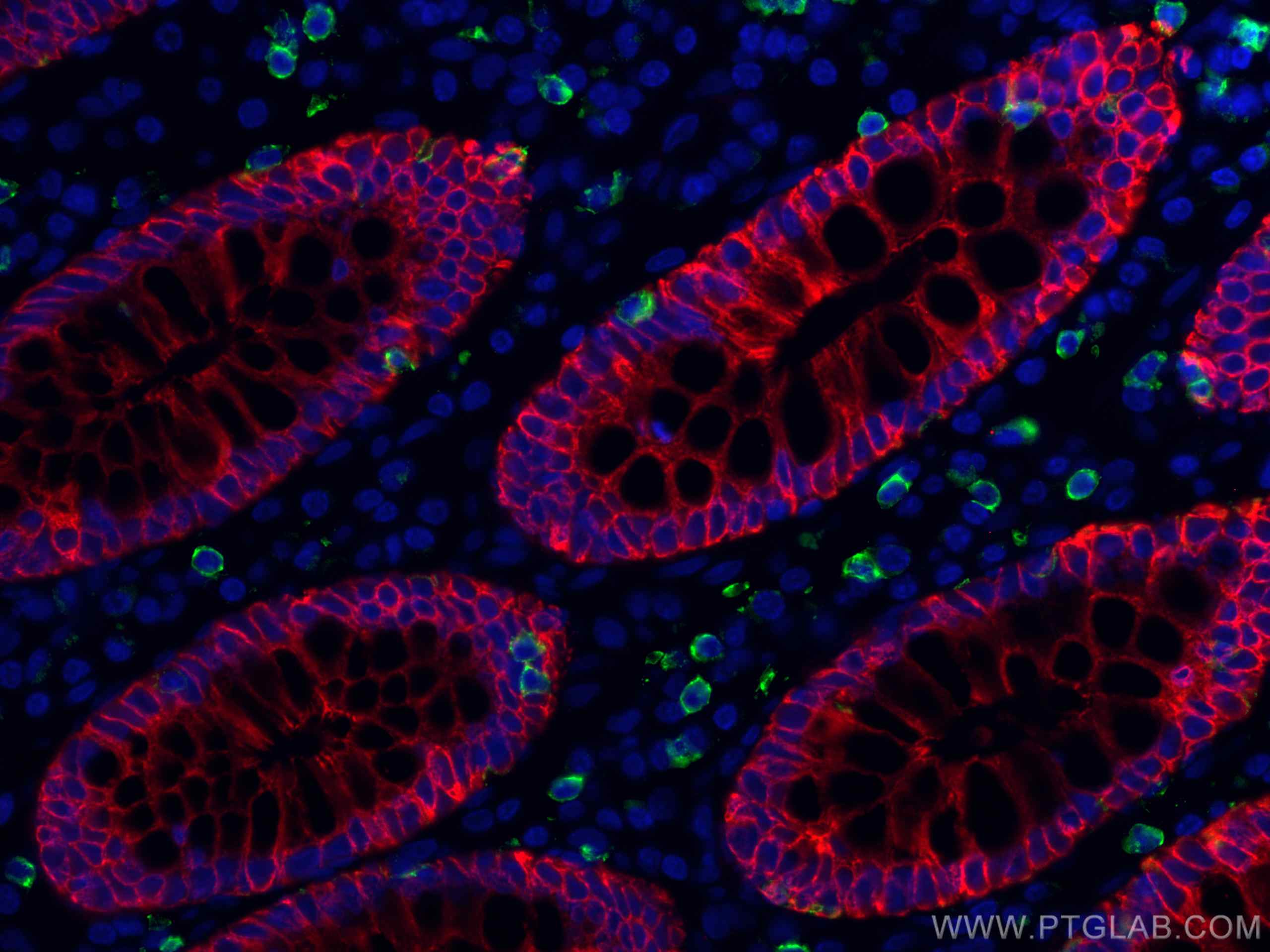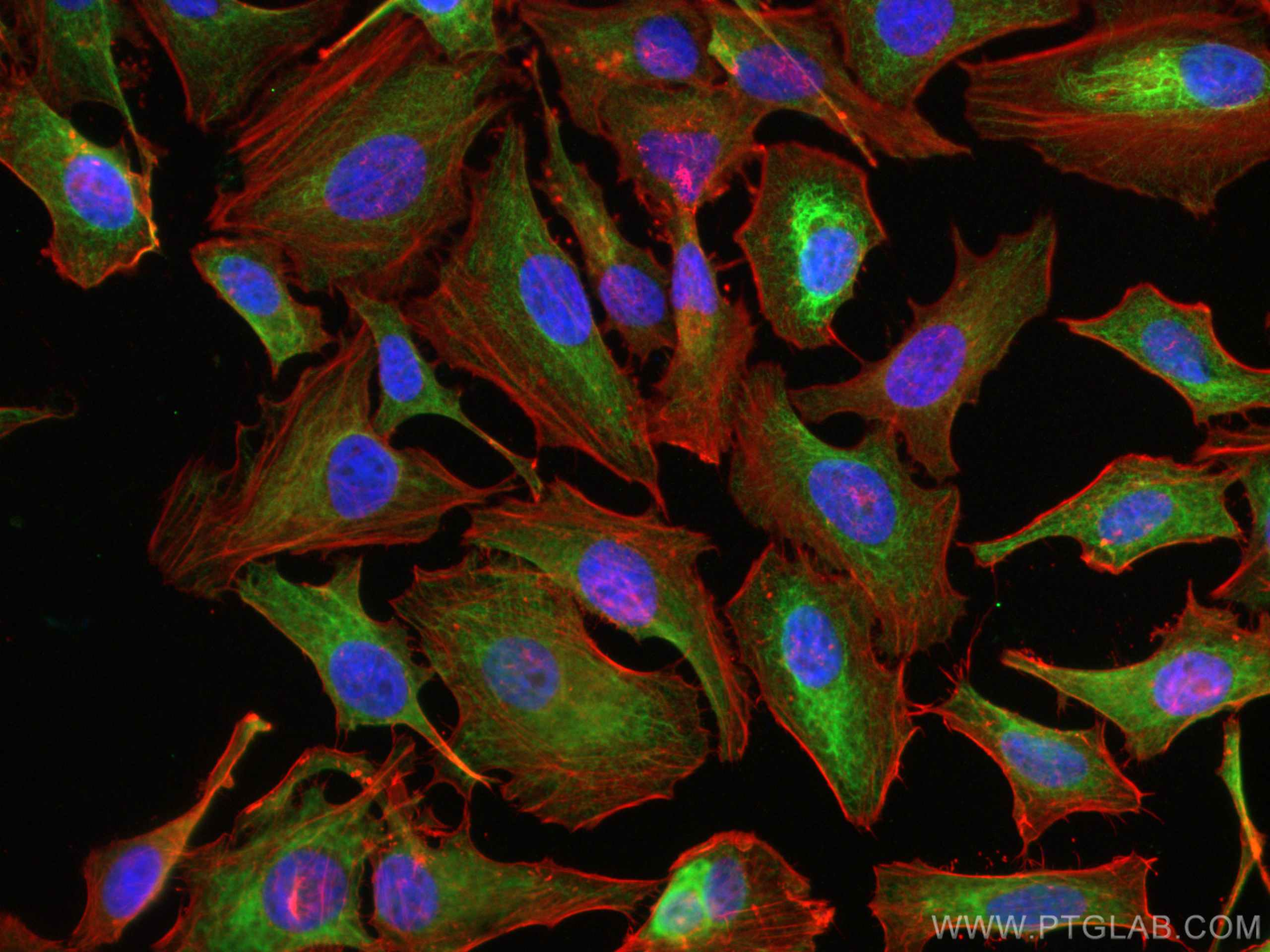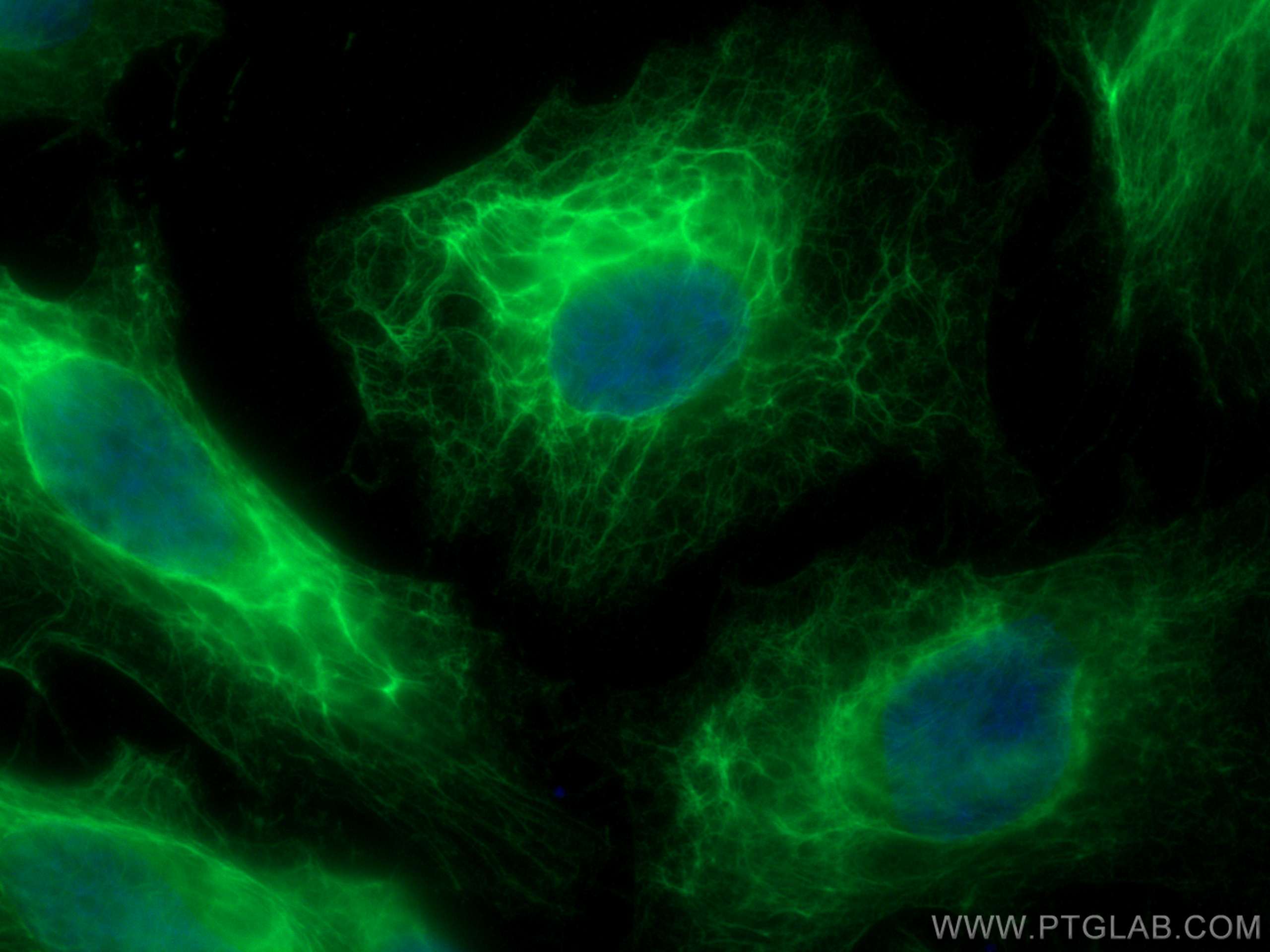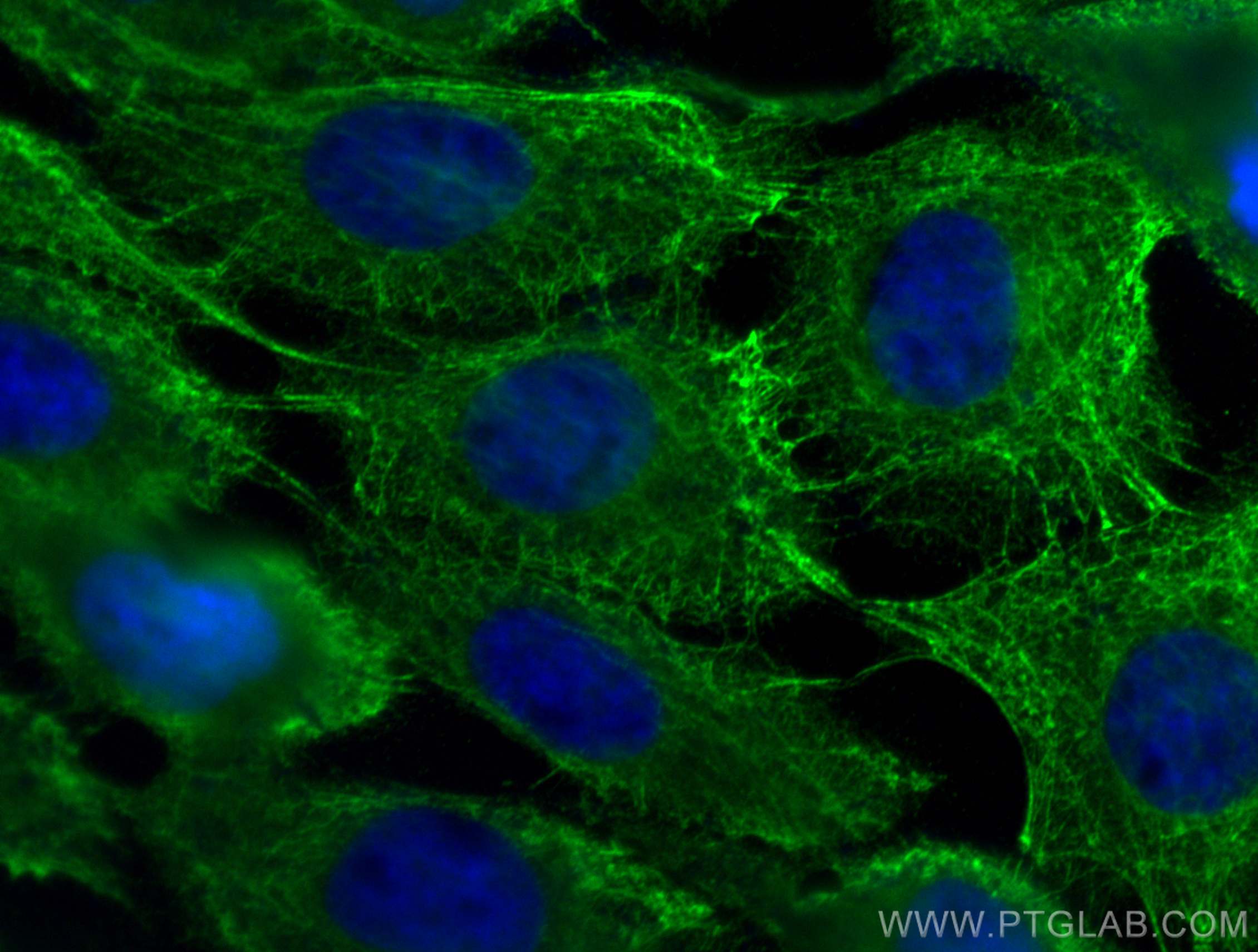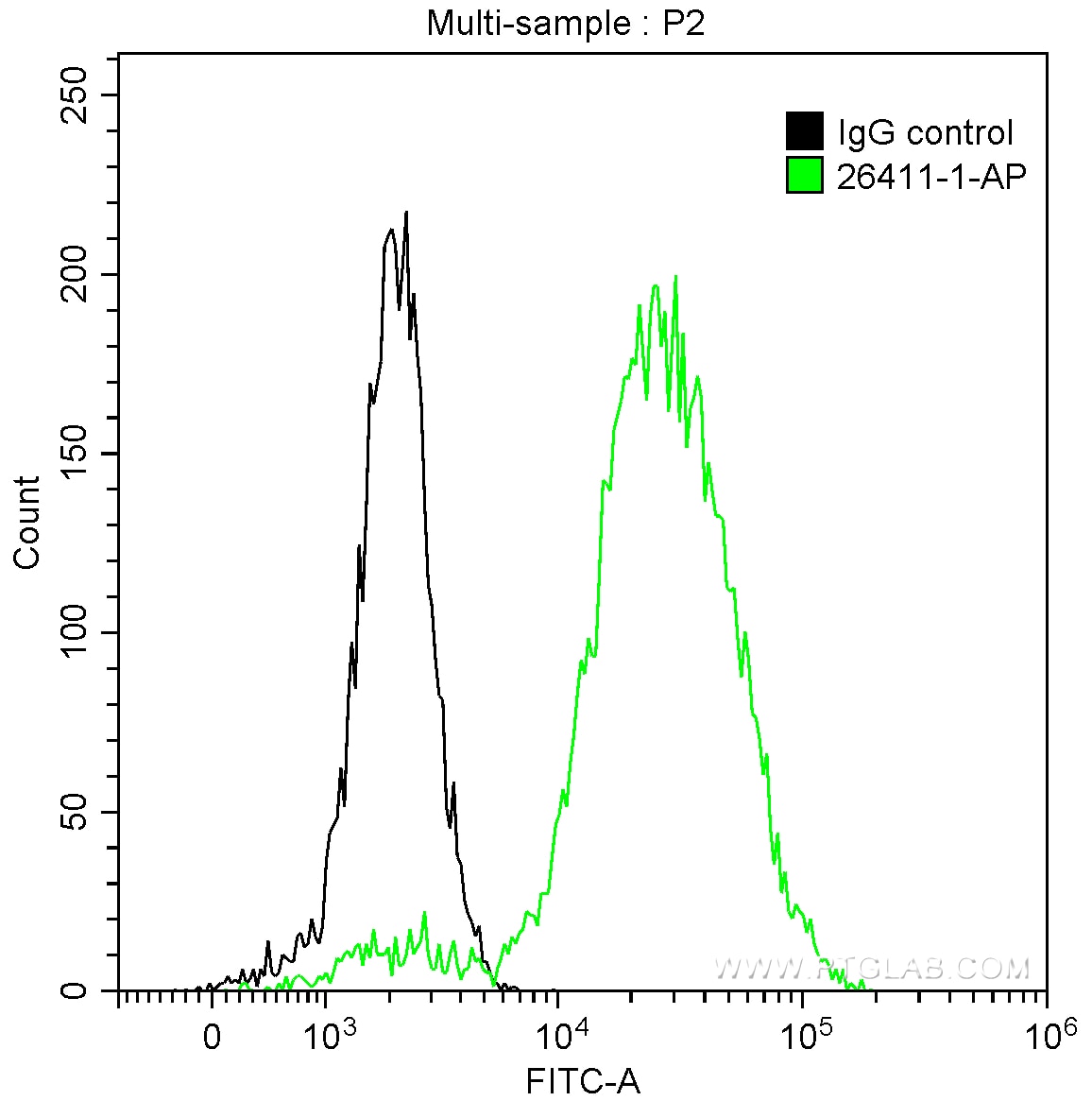Anticorps Polyclonal de lapin anti-pan-keratin
pan-keratin Polyclonal Antibody for FC, IF, IHC, WB, ELISA
Hôte / Isotype
Lapin / IgG
Réactivité testée
Humain et plus (2)
Applications
WB, IHC, IF, FC, ELISA
Conjugaison
Non conjugué
N° de cat : 26411-1-AP
Synonymes
Galerie de données de validation
Applications testées
| Résultats positifs en WB | cellules A431, cellules HeLa, cellules MCF-7 |
| Résultats positifs en IHC | tissu œsophagien humain, tissu d'amygdalite humain, tissu de cancer du poumon humain, tissu de carcinome à cellules rénales humain, tissu hépatique humain il est suggéré de démasquer l'antigène avec un tampon de TE buffer pH 9.0; (*) À défaut, 'le démasquage de l'antigène peut être 'effectué avec un tampon citrate pH 6,0. |
| Résultats positifs en IF | tissu de cancer du côlon humain, cellules A431, cellules HeLa |
| Résultats positifs en cytométrie | cellules A431, |
Dilution recommandée
| Application | Dilution |
|---|---|
| Western Blot (WB) | WB : 1:50000-1:200000 |
| Immunohistochimie (IHC) | IHC : 1:1500-1:6000 |
| Immunofluorescence (IF) | IF : 1:200-1:800 |
| Flow Cytometry (FC) | FC : 0.20 ug per 10^6 cells in a 100 µl suspension |
| It is recommended that this reagent should be titrated in each testing system to obtain optimal results. | |
| Sample-dependent, check data in validation data gallery | |
Applications publiées
| WB | See 3 publications below |
| IHC | See 12 publications below |
| IF | See 10 publications below |
Informations sur le produit
26411-1-AP cible pan-keratin dans les applications de WB, IHC, IF, FC, ELISA et montre une réactivité avec des échantillons Humain
| Réactivité | Humain |
| Réactivité citée | rat, Humain, souris |
| Hôte / Isotype | Lapin / IgG |
| Clonalité | Polyclonal |
| Type | Anticorps |
| Immunogène | pan-keratin Protéine recombinante Ag24184 |
| Nom complet | keratin 5 |
| Masse moléculaire calculée | 590 aa, 62 kDa |
| Poids moléculaire observé | 46-58 kDa |
| Numéro d’acquisition GenBank | BC024292 |
| Symbole du gène | KRT5 |
| Identification du gène (NCBI) | 3852 |
| Conjugaison | Non conjugué |
| Forme | Liquide |
| Méthode de purification | Purification par affinité contre l'antigène |
| Tampon de stockage | PBS avec azoture de sodium à 0,02 % et glycérol à 50 % pH 7,3 |
| Conditions de stockage | Stocker à -20°C. Stable pendant un an après l'expédition. L'aliquotage n'est pas nécessaire pour le stockage à -20oC Les 20ul contiennent 0,1% de BSA. |
Informations générales
Keratins are a large family of proteins that form the intermediate filament cytoskeleton of epithelial cells, which are classified into two major sequence types. Type I keratins are a group of acidic intermediate filament proteins, including K9-K23, and the hair keratins Ha1-Ha8. Type II keratins are the basic or neutral courterparts to the acidic type I keratins, including K1-K8, and the hair keratins, Hb1-Hb6. Keratin isoforms demonstrate tissue- and differentiation-specific profiles that make them useful as research biomarkers. Research studies have shown that mutations in keratin genes are associated with skin disorders, liver and pancreatic diseases, and inflammatory intestinal diseases. This antibody is a pan-keratin antibody.
Protocole
| Product Specific Protocols | |
|---|---|
| WB protocol for pan-keratin antibody 26411-1-AP | Download protocol |
| IHC protocol for pan-keratin antibody 26411-1-AP | Download protocol |
| IF protocol for pan-keratin antibody 26411-1-AP | Download protocol |
| Standard Protocols | |
|---|---|
| Click here to view our Standard Protocols |
Publications
| Species | Application | Title |
|---|---|---|
Biomaterials Heterotypic 3D pancreatic cancer model with tunable proportion of fibrotic elements. | ||
Biomaterials MSC-derived exosomes protect against oxidative stress-induced skin injury via adaptive regulation of the NRF2 defense system. | ||
Oncogene The keratin 17/YAP/IL6 axis contributes to E-cadherin loss and aggressiveness of diffuse gastric cancer | ||
Oncogene USP13 promotes development and metastasis of high-grade serous ovarian carcinoma in a novel mouse model. | ||
Front Cell Dev Biol Preclinical Application of Conditional Reprogramming Culture System for Laryngeal and Hypopharyngeal Carcinoma | ||
J Cancer Res Clin Oncol B7-H3 and CD47 co-expression in gastric cancer is a predictor of poor prognosis and potential targets for future dual-targeting immunotherapy |
